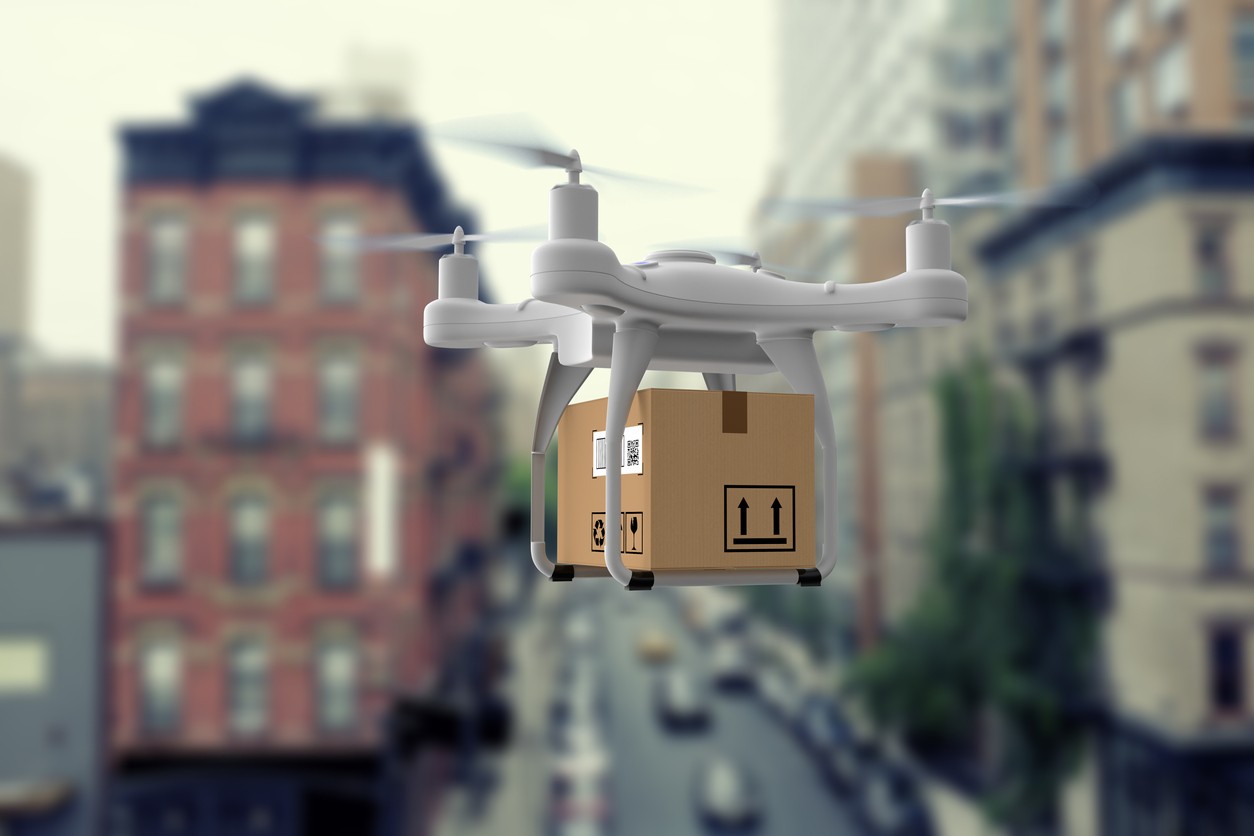Amazon drone delivery locations are rapidly expanding, revolutionizing how we receive packages. This isn’t just about faster delivery; it’s about reimagining logistics, impacting everything from infrastructure needs to environmental concerns. We’ll explore the current state of Amazon’s drone delivery program, examining its operational areas, the types of packages it handles, and the challenges and triumphs along the way. Get ready to soar through the intricacies of this innovative delivery system!
We’ll cover the infrastructure requirements, from drone hubs and airspace management to regulatory hurdles. We’ll also delve into the consumer experience, weighing the benefits against potential concerns, and analyzing the environmental impact compared to traditional delivery methods. Finally, we’ll look ahead to future expansion plans and the technological advancements poised to shape the future of drone delivery.
Current Amazon Drone Delivery Program Status
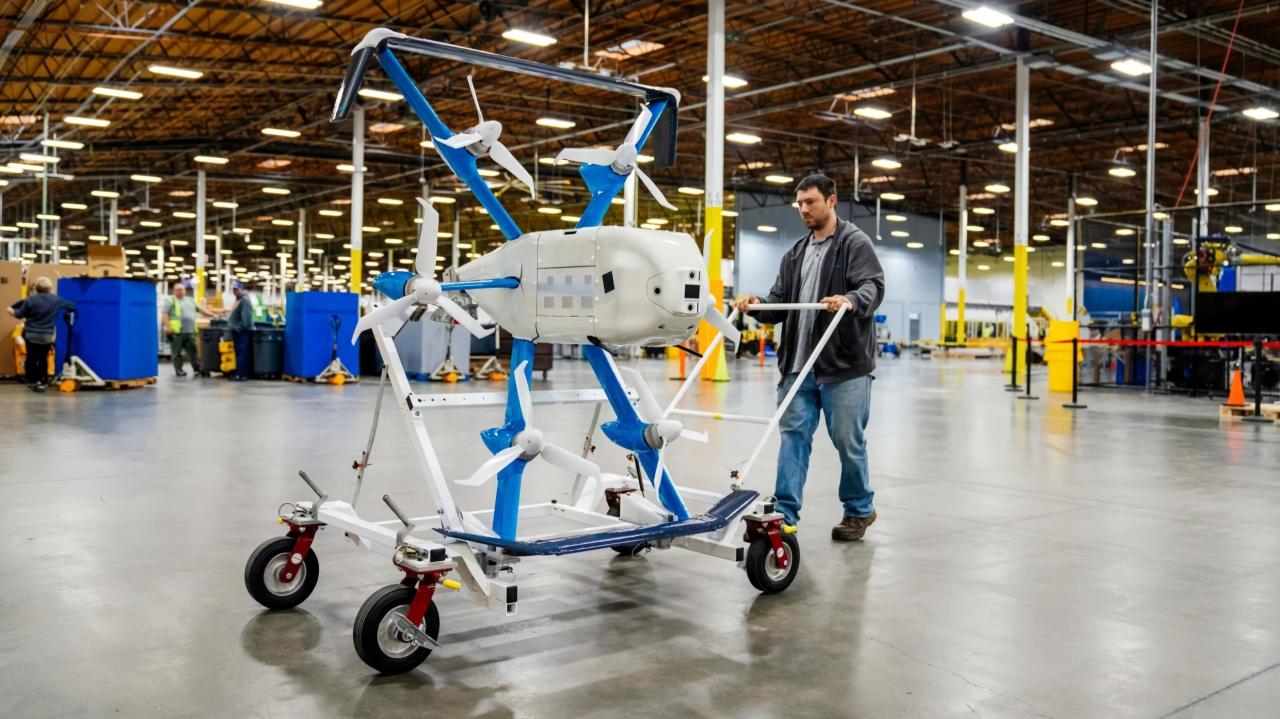
Amazon’s drone delivery program, officially known as Amazon Prime Air, is a significant step towards faster and more efficient delivery methods. While still in its relatively early stages, the program has demonstrated promising results and continues to expand its operational reach and capabilities. This section details the current status of the program, including its geographical reach, eligible packages, and timeline of development.
The program’s success hinges on several factors, including regulatory approvals, technological advancements, and public acceptance. Overcoming logistical hurdles, such as navigating airspace and ensuring safe and reliable delivery, are ongoing challenges that Amazon is actively addressing.
Geographical Areas of Operation
Currently, Amazon Prime Air operates in limited geographical areas within the United States. These locations are carefully selected based on factors such as population density, airspace regulations, and infrastructure suitability. Specific locations are not publicly announced for security and operational reasons, but are generally situated in rural and suburban areas where drone operations are easier to manage and less prone to interference.
The company strategically expands to new areas as it gains experience and regulatory approvals.
Eligible Package Types
The types of packages eligible for drone delivery are carefully restricted to ensure safe and efficient operations. Generally, these are smaller, lighter packages that can be easily handled by the drones. Items commonly eligible include everyday essentials, such as household goods, and smaller consumer electronics. Amazon continuously refines the criteria for eligible packages based on operational experience and technological improvements.
Larger or heavier items, along with fragile or temperature-sensitive goods, remain ineligible for drone delivery at this time.
Timeline of Program Expansion
Amazon’s drone delivery program has been under development for several years, with a phased rollout reflecting its complex technological and regulatory challenges. The program started with extensive testing and development phases, progressing to limited pilot programs in select locations. Subsequent phases have involved expanding the operational area, increasing the number of drones in operation, and refining delivery processes.
The expansion continues incrementally, with Amazon focusing on refining its technology and securing necessary regulatory approvals before expanding to new areas. A complete and detailed public timeline isn’t available due to competitive and operational sensitivities.
Key Milestones in Amazon’s Drone Delivery Program, Amazon drone delivery locations
| Year | Milestone | Description | Significance |
|---|---|---|---|
| 2013 | Initial Announcement | Amazon publicly announces its plans to develop a drone delivery system. | Marked the beginning of Amazon’s investment in drone technology for delivery. |
| 2016 | First Test Deliveries | Amazon conducts its first successful test deliveries using drones. | Demonstrated the feasibility of drone delivery, although on a small scale. |
| 2019 | First Customer Deliveries | Amazon begins making limited customer deliveries using drones in select locations. | A significant step towards commercial drone delivery operations. |
| 2020-Present | Ongoing Expansion and Refinement | Amazon continues to expand its drone delivery operations, improve its technology, and secure necessary regulatory approvals. | Represents the ongoing development and refinement of the Amazon Prime Air program. |
Infrastructure Requirements for Drone Delivery Locations
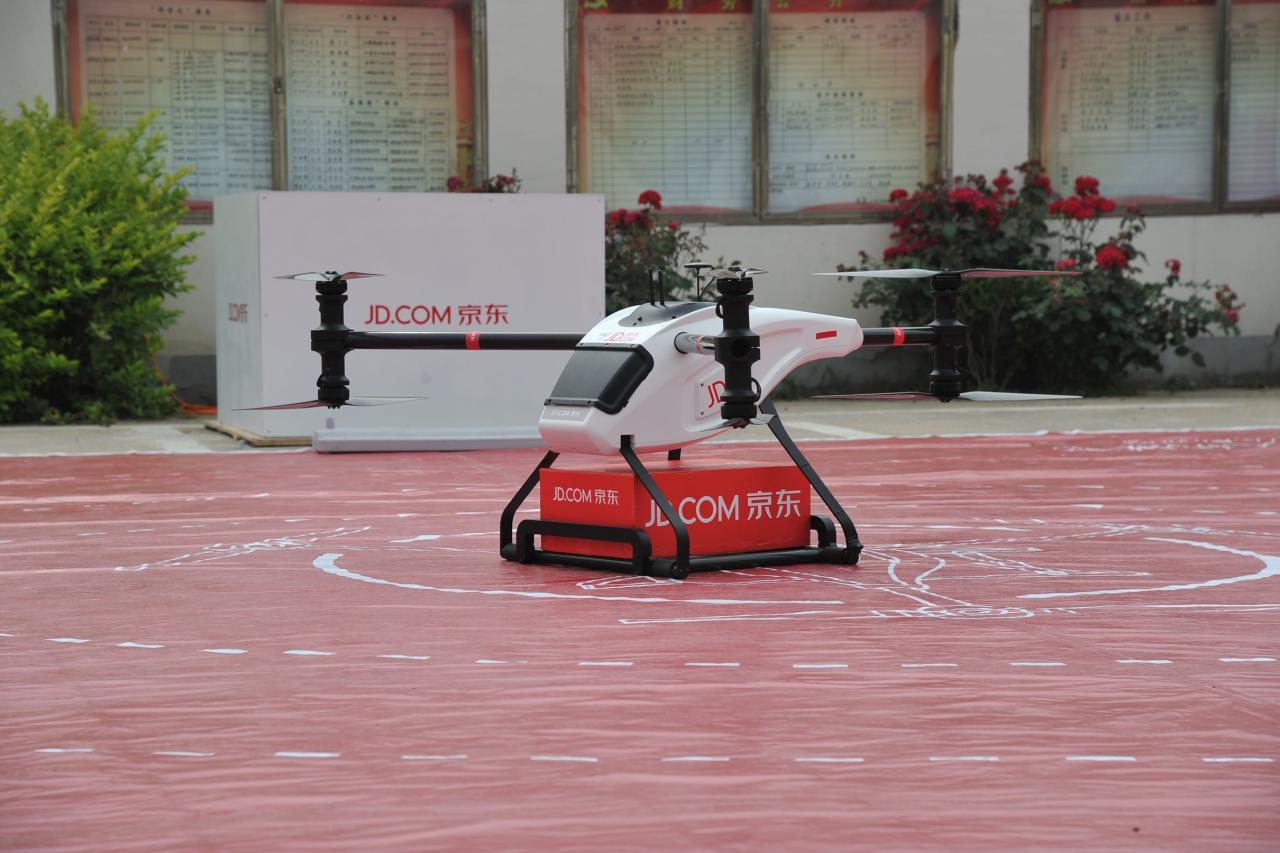
Setting up a successful drone delivery network requires more than just drones. It needs a robust and well-planned infrastructure to handle everything from takeoff and landing to charging and maintenance. This infrastructure must also comply with a complex web of regulations to ensure safety and efficiency. Let’s delve into the specifics.
Amazon’s drone delivery program relies on a sophisticated network of interconnected components. This isn’t simply about dropping packages off; it’s about a carefully orchestrated system ensuring speed, reliability, and safety. Key elements include dedicated drone hubs, efficient charging stations, and a comprehensive airspace management system. These components must work seamlessly together to realize the full potential of drone delivery.
Drone Hubs and Charging Stations
Drone hubs serve as central operational bases for drone fleets. These facilities are equipped with landing pads, charging stations, maintenance areas, and potentially even small warehouses for package sorting and loading. The design of these hubs needs to account for various factors, including the number of drones operating from the location, the size and weight of packages being delivered, and the frequency of deliveries.
Charging stations are crucial, ensuring drones are always ready for deployment. The type and capacity of the charging stations will depend on the battery technology used by the drones and the anticipated delivery volume. For example, a hub servicing a high-density urban area would likely require more charging stations and faster charging capabilities compared to a hub in a rural setting.
Airspace Management and Regulatory Approvals
Safe and efficient drone operations necessitate a robust airspace management system. This involves coordinating drone flights with other air traffic, including manned aircraft. Integration with existing air traffic control systems is crucial, along with the implementation of technologies like sense-and-avoid systems to prevent collisions. Obtaining the necessary regulatory approvals is a significant hurdle. This process involves compliance with Federal Aviation Administration (FAA) regulations in the United States, or equivalent authorities in other countries.
These regulations cover various aspects, including drone registration, pilot certification, operational limitations, and airspace authorizations. The approval process can be lengthy and complex, requiring detailed safety assessments and environmental impact studies.
Comparison with Traditional Delivery Methods
Compared to traditional delivery methods, Amazon’s drone delivery program presents unique infrastructure challenges. Traditional delivery relies on extensive road networks, delivery vehicles, and distribution centers. Drone delivery, however, necessitates the creation of entirely new infrastructure, including dedicated drone hubs, charging stations, and a system for managing drone traffic in the airspace. While traditional methods face challenges like traffic congestion and fuel costs, drone delivery faces obstacles related to airspace management, regulatory compliance, and the development of robust and reliable drone technology.
Logistical Challenges in Establishing Drone Delivery Infrastructure
The establishment of drone delivery infrastructure presents several logistical challenges across different geographical areas.
The following factors significantly impact the feasibility and cost-effectiveness of establishing drone delivery infrastructure in various locations:
- Terrain and weather conditions: Mountainous or heavily forested areas present significant challenges for drone navigation and operations, requiring specialized drones and robust control systems. Adverse weather conditions, such as strong winds or heavy rain, can also severely impact operational reliability.
- Population density: High-density urban areas pose challenges related to airspace management and potential safety risks, while sparsely populated areas may require larger drone ranges and longer flight times, impacting operational efficiency.
- Infrastructure availability: The availability of existing infrastructure, such as power grids and communication networks, is crucial for establishing drone hubs and charging stations. Remote areas may require significant investment in infrastructure development.
- Regulatory frameworks: Variations in regulatory frameworks across different countries and regions can create significant hurdles in obtaining the necessary approvals and permits for drone operations. Harmonizing regulations across jurisdictions is crucial for facilitating seamless cross-border drone delivery.
- Public acceptance and safety concerns: Addressing public concerns about noise pollution, privacy, and the safety of drone operations is crucial for gaining public acceptance and ensuring the successful implementation of drone delivery programs.
Consumer Experience and Adoption of Drone Delivery
Drone delivery offers a compelling alternative to traditional shipping methods, promising a revolution in how we receive our goods. Its success hinges heavily on consumer acceptance, which depends on a positive and reliable experience. This section explores the benefits, challenges, and overall consumer perception of this emerging technology.
The potential benefits for consumers are significant. Faster delivery times are a major draw, with drones capable of delivering packages within hours, or even minutes, of an order being placed, compared to the days it might take with traditional shipping. This speed is particularly attractive for time-sensitive items or last-minute needs. Reduced costs are another potential advantage, as drone delivery can potentially eliminate some of the expenses associated with ground transportation, particularly fuel costs and driver salaries.
This could translate into lower prices for consumers, or faster and more frequent deliveries at the same price.
Amazon’s planning drone delivery locations is a huge undertaking, needing careful consideration of airspace and infrastructure. Recent incidents, like the one described in this article about the paris drone crash , highlight the safety challenges involved. Understanding these risks is key to ensuring smooth and safe Amazon drone deliveries in the future.
Consumer Feedback and Reviews
While widespread adoption is still developing, available consumer feedback on Amazon’s drone delivery program (where it’s operational) reveals a mixture of excitement and apprehension. Early adopters have praised the novelty and speed of drone delivery, often describing the experience as “futuristic” and “convenient.” Positive reviews frequently highlight the ease of the process, from ordering to receiving the package.
Conversely, some reviews express concerns about package security and the overall reliability of the system, especially in inclement weather. Specific details regarding negative feedback are scarce due to the limited public availability of detailed customer reviews for this nascent technology.
Consumer Concerns and Challenges
Several potential concerns surround the consumer experience with drone delivery. Safety is paramount; the risk of drone malfunctions or accidents, particularly in populated areas, is a legitimate concern. Privacy is another significant issue; the use of drones for delivery raises questions about surveillance and data collection. Reliability is also a factor; factors like weather conditions, technical malfunctions, and regulatory hurdles can impact the consistency of drone deliveries.
So you’re curious about where Amazon’s delivering packages via drone, huh? It’s pretty cool tech! To get the lowdown on the exact places Amazon is currently using its drone delivery program, check out this helpful resource: amazon drone delivery locations. Knowing these locations gives you a better idea of how widespread this service is and where you might see those drones buzzing around.
Amazon drone delivery locations are expanding all the time!
Finally, the initial cost of the infrastructure required for drone delivery might lead to limited geographical availability, excluding certain communities from this service.
Comparison of Customer Experience: Drone vs. Traditional Delivery
| Feature | Drone Delivery | Traditional Delivery |
|---|---|---|
| Delivery Speed | Minutes to hours | Days to weeks |
| Cost | Potentially lower (depending on distance and infrastructure) | Variable, often higher for faster shipping options |
| Convenience | High, direct delivery to a designated location | Moderate, requires customer presence or designated drop-off location |
| Reliability | Subject to weather and technical issues; still developing | Generally reliable, but subject to delays and logistical issues |
Environmental Impact of Drone Delivery
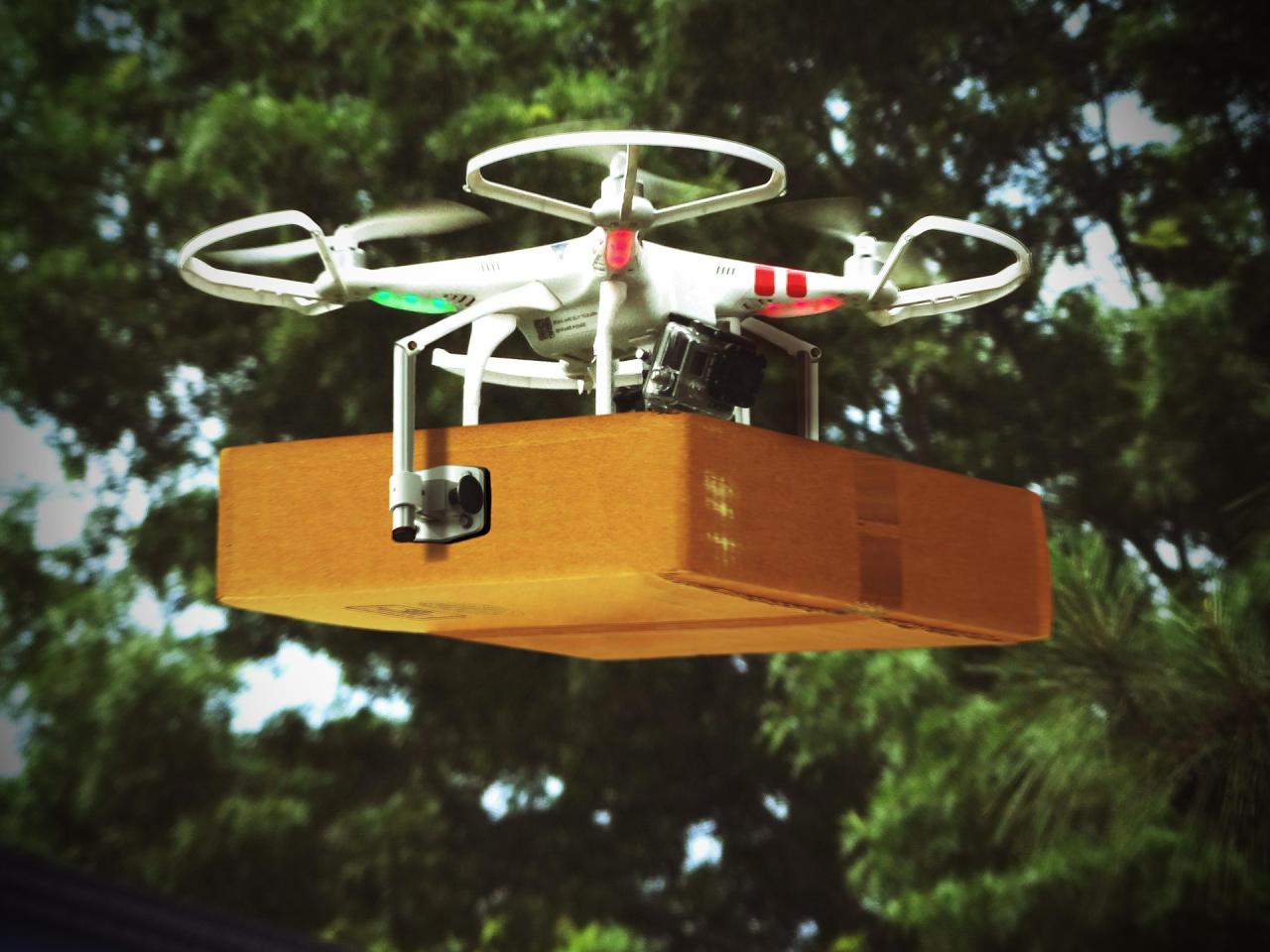
Drone delivery offers a glimpse into a faster, more efficient future for package transport, but it’s crucial to examine its environmental footprint. Weighing the benefits against the potential drawbacks requires a balanced look at both the positive and negative impacts on our planet. This section explores the environmental considerations surrounding Amazon’s drone delivery program and compares it to traditional methods.
The environmental impact of drone delivery is a complex issue with both advantages and disadvantages. While drones offer potential fuel efficiency benefits over ground transportation, especially for shorter distances, their manufacturing, operation, and eventual disposal contribute to environmental concerns. Conversely, traditional delivery methods, especially those involving large trucks, contribute significantly to greenhouse gas emissions and traffic congestion. The overall environmental impact depends on various factors, including drone design, delivery distance, and the type of ground-based transportation used for comparison.
Amazon’s Efforts to Minimize Environmental Impact
Amazon is actively working to reduce the environmental impact of its drone delivery program. This involves several key strategies. They are investing in the development of more energy-efficient drones, utilizing lightweight materials in their construction to reduce fuel consumption, and optimizing flight routes to minimize energy expenditure. Furthermore, they are exploring the use of sustainable materials in drone manufacturing and developing efficient battery recycling programs to reduce electronic waste.
The company also publicly reports on its progress towards these goals, promoting transparency and accountability. Specific examples include the use of lighter-weight carbon fiber components in drone construction and the implementation of sophisticated flight planning software to optimize routes and minimize energy use. The company’s commitment to renewable energy sources for charging its drone fleet also contributes to minimizing its environmental impact.
Carbon Footprint Comparison: Drone vs. Ground Delivery
A direct comparison of the carbon footprint of drone delivery versus traditional ground-based delivery methods is challenging and depends heavily on several variables. These include the distance of the delivery, the size and weight of the package, the type of vehicle used for ground delivery (e.g., small car, large truck), and the efficiency of the drone and the ground vehicle.
For short-distance deliveries (e.g., within a 5-mile radius), studies suggest that drones can have a lower carbon footprint than a gasoline-powered delivery truck. However, for longer distances, the energy consumption of drones might become comparable to or even exceed that of more fuel-efficient ground transportation options. A hypothetical example: delivering a small package 2 miles using a drone might produce significantly less CO2 than using a large delivery truck; however, delivering the same package 50 miles could result in a higher carbon footprint for the drone due to battery limitations and the energy required for longer flights.
Visual Representation of Environmental Impact
Imagine a bar graph. The horizontal axis represents different delivery methods: “Drone Delivery,” “Small Car Delivery,” “Large Truck Delivery,” “Bicycle Delivery,” and “Electric Vehicle Delivery.” The vertical axis represents the relative carbon dioxide emissions (CO2e) per delivery. The bars would visually represent the relative CO2e for each delivery method, with bicycle delivery and electric vehicle delivery having the shortest bars (lowest emissions), followed by drone delivery (for short distances), then small car delivery, and finally large truck delivery with the longest bar (highest emissions).
The exact height of each bar would vary depending on the distance of the delivery and other factors, reflecting the complexity of this comparison. This visualization clearly demonstrates that while drones offer potential environmental benefits over some traditional methods, particularly for short distances, the overall impact is dependent on various factors.
Future Prospects and Expansion Plans for Drone Delivery
Amazon’s drone delivery program, Prime Air, is still in its relatively early stages, but the company has ambitious plans for its expansion and improvement. Their vision goes beyond simply delivering packages; it’s about creating a more efficient, sustainable, and accessible delivery network. This section explores Amazon’s publicly stated goals and the technological advancements that will shape the future of drone delivery.Amazon’s publicly stated goal is to significantly expand its drone delivery network, increasing both the number of delivery locations and the types of goods that can be transported.
While precise figures aren’t always released, news reports and official statements indicate a steady expansion of their operational areas, aiming for broader geographic coverage and increased daily delivery capacity. This expansion will likely involve collaborations with local authorities and regulatory bodies to ensure safe and compliant operations.
Technological Advancements Enhancing Drone Delivery
Several technological advancements are crucial to the success and scalability of Amazon’s drone delivery system. These advancements will improve efficiency, safety, and the range of goods that can be delivered.Improved battery technology is paramount. Longer flight times translate directly to a wider delivery radius and the ability to handle more deliveries per drone. We’re seeing advancements in battery density and charging speeds, potentially leading to drones capable of covering significantly larger areas without needing frequent battery swaps.
So, Amazon’s expanding its drone delivery locations, aiming for wider coverage. It makes you wonder about the logistics – check out this article on the mystery drone Paris incident to see some of the potential challenges involved with unauthorized drone activity. Understanding these issues is crucial for safe and efficient Amazon drone delivery operations in the future.
Furthermore, advancements in autonomous navigation and obstacle avoidance systems, utilizing technologies like AI and machine learning, will increase safety and reliability, especially in complex urban environments. This includes enhanced sensor capabilities, enabling drones to navigate around unpredictable obstacles like birds or unexpected changes in the environment. Finally, improved package handling mechanisms, such as more robust and versatile drone designs, will allow for the delivery of a wider variety of goods, from fragile items to heavier packages.
Drone Delivery in Remote and Underserved Areas
Drone delivery offers a unique solution to logistical challenges in remote or underserved areas, where traditional delivery methods are often expensive, inefficient, or unavailable. The ability of drones to bypass congested roads and difficult terrain provides a significant advantage. For example, consider rural communities with limited road infrastructure. Drone delivery could provide timely access to essential goods like medications, groceries, and other supplies, improving the quality of life for residents.
Similarly, disaster relief efforts could greatly benefit from the rapid and flexible deployment of drones to deliver essential aid to affected areas, even in situations where traditional transportation is disrupted.
Projected Timeline for Drone Delivery Expansion
Predicting the exact timeline for Amazon’s drone delivery expansion is difficult due to the evolving nature of the technology and regulatory landscape. However, based on current progress and publicly available information, a plausible scenario might look like this:
| Year | Projected Expansion |
|---|---|
| 2024-2025 | Expansion into additional metropolitan areas, focusing on increasing delivery capacity in existing operational zones and adding a few new geographically diverse locations. Focus on refining existing operational procedures and expanding the types of goods delivered. |
| 2026-2028 | Significant expansion into more rural and suburban areas, leveraging advancements in battery technology and autonomous navigation. Increased collaboration with local communities and governments to establish new delivery hubs and integrate drone delivery into existing logistics networks. Potentially exploring international expansion into suitable markets. |
| 2029 and beyond | Widespread drone delivery network covering a substantial portion of Amazon’s delivery area, with potentially more specialized drone fleets for various types of goods and delivery scenarios. Further integration with other delivery methods for a more seamless and efficient overall delivery system. |
This timeline represents a potential scenario and is subject to change based on technological advancements, regulatory approvals, and market demand. However, it illustrates the ambitious nature of Amazon’s plans for drone delivery and its potential to reshape the logistics landscape in the coming years.
Closing Summary
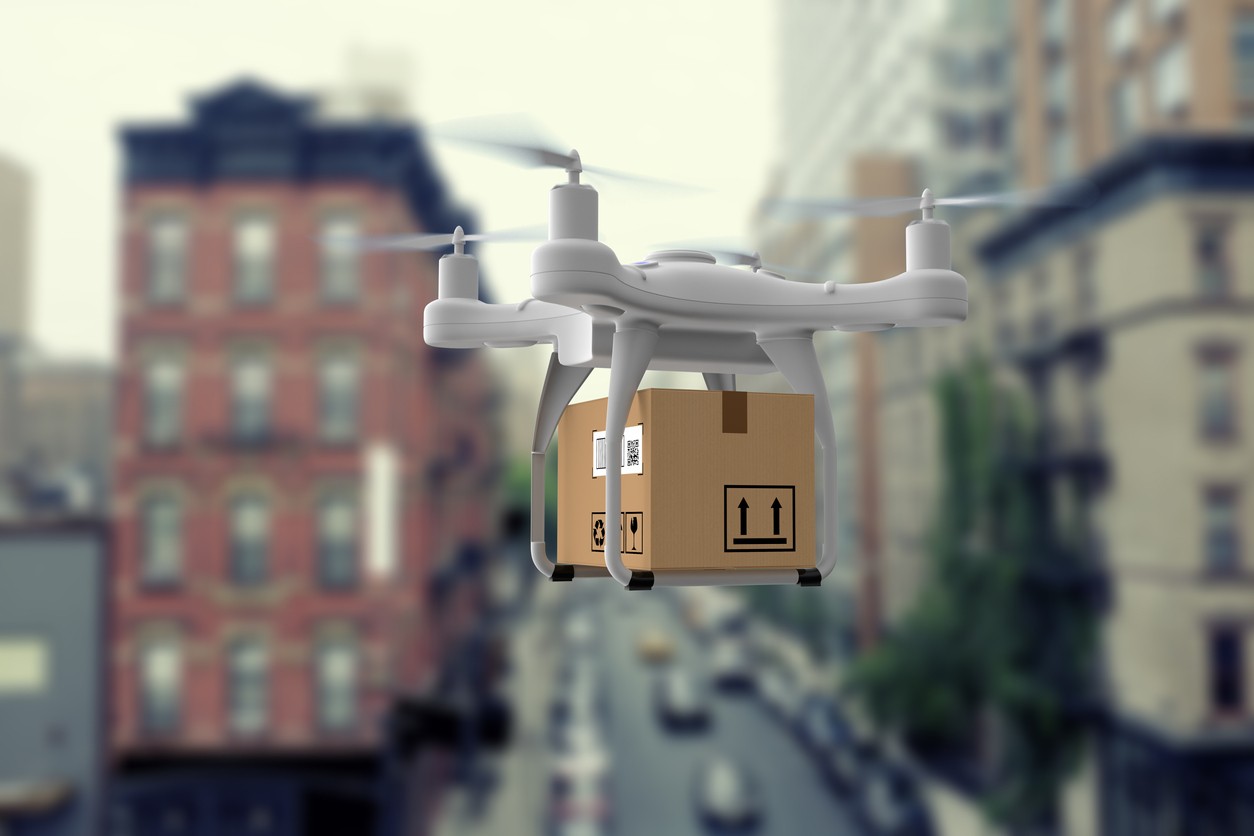
From its initial launch to its ambitious expansion plans, Amazon’s drone delivery program is reshaping the landscape of package delivery. While challenges remain, the potential benefits – faster delivery, reduced emissions, and improved access to remote areas – are undeniable. As technology continues to advance and regulations evolve, we can expect even greater integration of drone delivery into our daily lives.
The future of getting your packages is taking flight.
Helpful Answers: Amazon Drone Delivery Locations
What types of packages are currently eligible for Amazon drone delivery?
Currently, Amazon drone delivery typically handles smaller, lighter packages. The exact weight and size limits can vary depending on location and operational capabilities.
How much does Amazon drone delivery cost?
The cost is generally the same as standard Amazon delivery; it’s not a separate, premium service. The cost is incorporated into the overall shipping price.
Is Amazon drone delivery available everywhere?
No, Amazon drone delivery is currently limited to specific locations. The program is expanding gradually, but availability is not yet widespread.
How safe is Amazon drone delivery?
Amazon employs numerous safety measures, including sophisticated flight control systems and rigorous testing. However, like any technology, there are inherent risks. Amazon actively works to minimize these risks.
